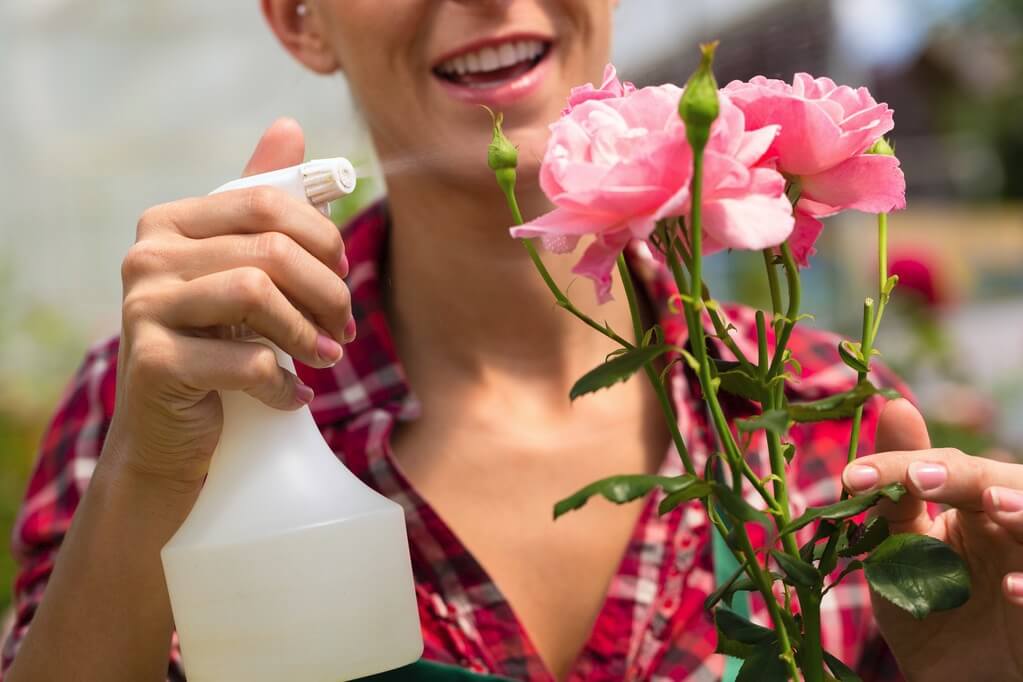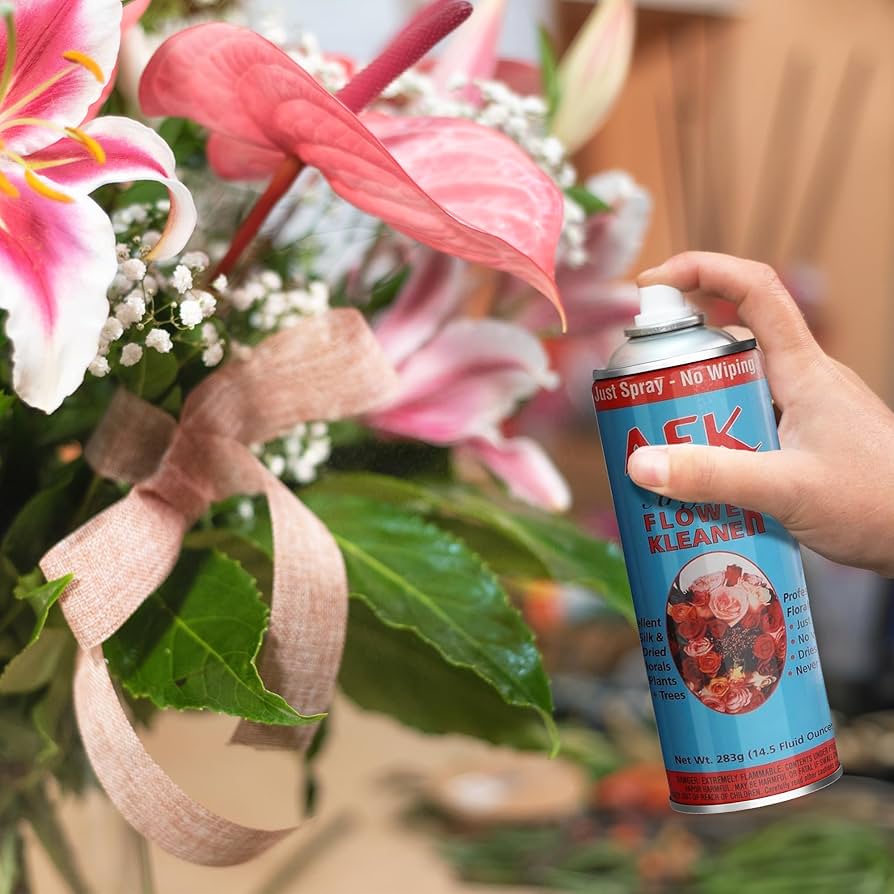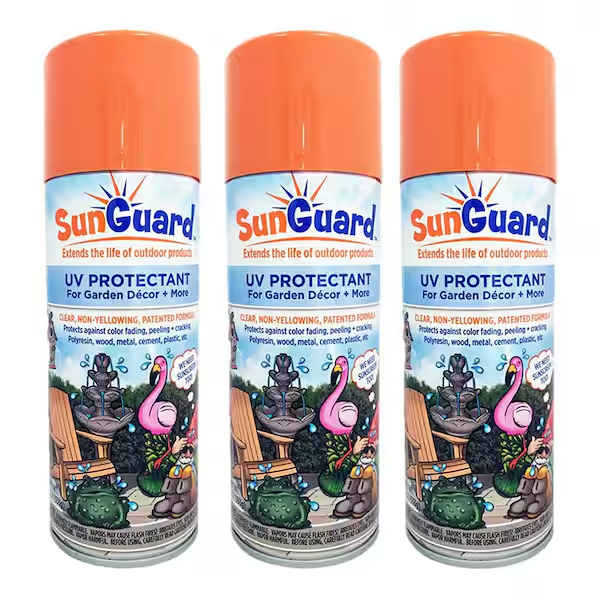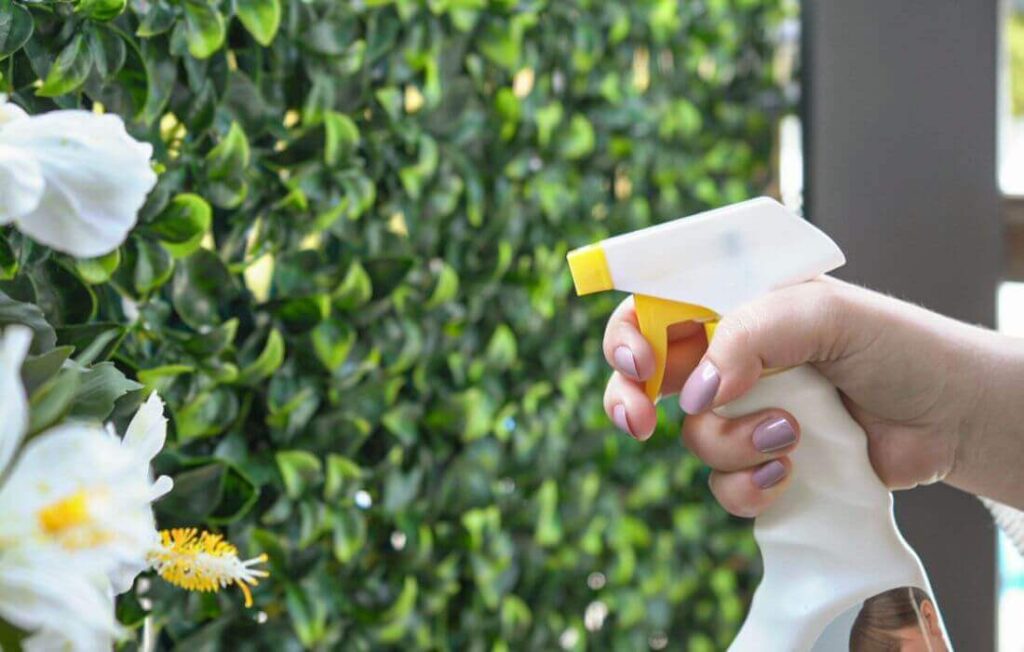5 Reasons to Use a UV Spray for Outdoor Artificial Plants and Save Money
Using a uv spray for outdoor artificial plants is one of the best ways to protect décor from fading1 and damage. Sunlight ruins artificial flowers fast. Colors fade. Petals crack. Business owners spend money replacing décor2 that should last. Protecting outdoor faux plants3 feels urgent for anyone invested in quality displays[^4]. A uv spray for outdoor artificial plants[^5] helps extend product life[^6] and save costs in the long run.
UV sprays can extend the life of outdoor artificial plants. They work by creating a layer that blocks UV rays[^7], reducing fading and damage. Results vary by climate, product type, and how well you apply the uv spray for outdoor artificial plants. For more on choosing quality faux plants3, read this guide on top artificial plants.

Used for protecting artificial flowers in outdoor events, gardens, and commercial displays.
Outdoor décor needs to stay beautiful to impress clients and avoid costly replacements. Many businesses rely on a uv spray for outdoor artificial plants to avoid color fading and maintain brand image. The popularity of using a uv spray for outdoor artificial plants has grown as businesses look for cost-effective protection. Let’s explore how UV sprays can help protect investments and maintain business reputation.
How Sunlight Damages Outdoor Faux Plants?
One of the main reasons to use a uv spray for outdoor artificial plants is to avoid sunlight damage[^8] that destroys colors and materials.
Artificial plants look perfect at first. But sunlight slowly destroys them. The sun’s UV rays[^7] break down dyes and materials. Plants lose color and become brittle. This damages a business’s image and leads to extra costs.
Sunlight damages artificial plants by splitting chemical bonds[^9] in the dyes and materials. UV rays[^7] penetrate deep, fading colors and causing cracking. This reduces the life of outdoor displays and leads to faster replacements. Learn how others maintain décor durability in this article on keeping artificial flowers looking good at home.

Shows damage on outdoor faux plants used in landscaping and storefront décor.
I remember Sophia, who runs an event company. She bought high-end artificial wisteria for a beach wedding. After six months in strong sunlight, the flowers turned from bright white to a dull yellow. She was upset. She had paid extra for premium flowers. I explained that even top-quality faux flowers can fade without UV protection[^10]. Sunlight breaks apart dyes in plastics and fabrics. It happens faster in places with strong sun, like Arizona or parts of Australia.
Sun damage isn’t just about color. The material becomes brittle. Leaves crack or fall off. For Sophia, this meant replacing décor2 sooner. For many businesses, the cost of replacing faded products becomes a hidden expense. Some think cheaper artificial plants fade faster. That’s true in many cases. Lower-cost items often skip UV-resistant materials during manufacturing. The dyes are weaker. The plastic is softer. Even so, all artificial plants will fade eventually without extra protection.
Businesses using outdoor faux flowers must plan for UV damage. Regular maintenance or protection becomes part of running a reliable décor business. UV sprays aim to slow this fading, but they’re not magic. For insights on market trends, check this industry article on faux flowers.
Planning for sunlight exposure is crucial. I’ve seen many businesses regret skipping a uv spray for outdoor artificial plants, because sunlight damage[^8] often arrives faster than they expect. For businesses, choosing a uv spray for outdoor artificial plants can be a practical step to reduce fading and extend décor life.
How UV Sprays Work on Artificial Flowers?
Understanding how a uv spray for outdoor artificial plants works is essential for protecting valuable décor and avoiding fading.
People hope UV sprays can stop fading. The idea sounds simple. A clear spray covers the plant. The layer blocks UV rays[^7], reducing fading and damage. Many business owners[^11] wonder if it really works.
UV sprays create a shield on artificial plants. This layer absorbs or reflects UV rays[^7]. It helps keep colors bright and materials strong for longer. But sprays vary in strength and need careful application.

Demonstrating UV spray application on faux flowers for wedding arches and outdoor displays.
I talked with Sophia again about UV sprays. After her fading problem, she wanted a solution. She bought a popular UV spray and tested it on an ivy backdrop. After nine months outside, the sprayed ivy was still green. The untreated parts faded. However, she noticed the spray left a slight shine, which wasn’t ideal for close-up wedding photos.
UV sprays often use acrylic or silicone formulas. Acrylic sprays create a hard coat. They work well on plastic but might make fabric petals stiff. Silicone sprays stay flexible. They’re better for soft materials but attract dust.
One important fact: UV sprays don’t bring back lost color. If your plants are already faded, spraying them won’t restore the original shade. Sophia tried it. She sprayed old roses that turned yellow. The spray stopped more fading but didn’t make the flowers bright again.
Reapplication matters. UV sprays wear away from rain or cleaning. Businesses should reapply every 6 to 12 months. I always tell clients to test a small area first. Some sprays darken colors slightly or change the surface shine. See an example of a commercial UV spray product here at Afloral.
Clients often ask if UV sprays work as well as factory-applied UV protection[^10]. In my experience, built-in protection is stronger. The UV-resistant chemicals mix into the material during manufacturing. Sprays only coat the surface. Still, a uv spray for outdoor artificial plants can add extra protection or help older items survive longer in harsh sunlight.
For commercial displays or outdoor events, using a uv spray for outdoor artificial plants helps protect valuable décor investments and maintain vibrant color longer.
Types of UV Sprays for Outdoor Artificial Plants?
Choosing the right uv spray for outdoor artificial plants ensures the best protection against fading and cracking.
Shoppers see many UV sprays on shelves. Some are cheap. Others cost more than forty dollars a can. Picking the right spray makes a big difference. Not all sprays work for every faux plant material.
UV sprays differ in what chemicals they use, how they look, and how long they last. Choosing the right one depends on what your artificial plants are made of and where you plan to use them.

Selection of UV sprays suitable for commercial décor, retail displays, and event installations.
Sophia once tried a cheap UV spray from an online store. She sprayed it on pink peonies. The flowers stayed sticky for days. Dust collected fast. The flowers looked dull instead of protected. Later, she used a professional-grade UV spray meant for stage props. It worked better and didn’t leave a sticky film.
There are a few main types:
- Acrylic sprays form a hard coat. They work well for plastic plants. They might leave a glossy finish and make fabric petals stiff.
- Silicone sprays stay flexible. They’re good for silk flowers and soft plastics. They usually have a matte look but collect dust easily.
- Polyurethane blends offer tough protection. But they can crack on flexible materials like fabric petals.
- Water-based UV sprays are lower in smell. They’re safe for indoor use but often wear off faster outdoors.
Sophia often chooses silicone sprays[^12]. They’re gentle and keep flowers soft. For plastic greenery like boxwood panels, acrylic sprays[^13] work well. Businesses must check spray labels for “non-yellowing” claims. Some sprays cause yellowing over time. For more UV spray product options, explore Home Depot’s artificial plants section.
Spray finishes vary. Some leave a glossy surface. That works for nightclub décor where shine looks good. Others prefer matte sprays. Matte keeps flowers looking real under bright lights.
How much spray you need depends on your project. One small can covers about ten square feet. Sophia uses many cans for big arches or flower walls. She budgets for this extra cost because good sprays aren’t cheap.
Choosing the right uv spray for outdoor artificial plants avoids problems and protects your investment. Picking the best uv spray for outdoor artificial plants depends on your specific materials and the climate where you install them. For inspiration on event décor using faux flowers, visit our guide on unforgettable artificial flower arrangements.
In any case, testing different products helps find the best uv spray for outdoor artificial plants to match specific business needs and aesthetic goals.
Cost and ROI of UV Treatments?
Many businesses consider the cost of a uv spray for outdoor artificial plants as an investment rather than an expense.
UV treatments cost money now but save money later. They protect faux plants3 longer. Businesses avoid replacing faded décor. The return on investment often makes sense for high-use items.

Calculating savings for businesses investing in UV protection for artificial plant décor.
Sophia compared costs in her business. Replacing a floral arch costs over three hundred dollars. Spraying that same arch costs about forty dollars. If the spray extends its life by even one season, the savings are clear.
Some businesses skip UV sprays. They think sun damage won’t be so bad. But then clients complain about dull flowers. They must replace décor or give refunds. The hidden cost ends up higher than the price of UV spray.
Sophia uses her arches at many weddings. If UV spray helps her use them an extra year, she saves hundreds. She also saves labor. Faded flowers need extra time to fix or restyle.
There’s another cost — reputation. Faded flowers look cheap. Clients expect décor that looks perfect. Sophia lost a client once because her backdrop faded too fast. After that, she always budgets for UV protection[^10].
Sprays aren’t magic. They wear off. Businesses need to reapply sprays each season. This takes time and money. For décor used many times, a uv spray for outdoor artificial plants makes financial sense.
From my experience, a uv spray for outdoor artificial plants quickly pays for itself when used in high-traffic locations. For businesses focused on quality and long-term savings, investing in a uv spray for outdoor artificial plants is often a smart financial decision.
Tips for Applying UV Spray Correctly?
Applying a uv spray for outdoor artificial plants correctly ensures longer-lasting color and protects business reputation.
Businesses buy UV spray with high hopes. But mistakes ruin results. Drips, streaks, or damage happen fast if you spray the wrong way. Correct application matters for lasting protection.
Applying UV spray needs patience. Spray thin coats on clean, dry flowers. Test a hidden area first. Repeat spraying every few months for the best results.

Used for applying UV spray on outdoor artificial plants to protect décor in commercial spaces, events, and garden installations.
Sophia learned about spraying the hard way. Her first time spraying faux wisteria, she held the can too close. Liquid pooled and dried into glue-like drips. Fixing it took hours. Now she sprays more carefully.
Here’s how I help clients like Sophia:
- Clean plants first. Dust stops the spray from sticking.
- Shake the spray well.
- Test on a hidden spot. Some sprays change color slightly.
- Hold the can twelve inches away. Spray side to side in thin layers.
- Let each coat dry before adding another.
- Lift petals gently to spray hidden spots.
- Avoid windy days. Wind makes spray drift and waste product.
Sophia uses a cardboard box as a spray booth. It stops spray from spreading around her studio. It also protects flowers from dust while wet.
Spraying too much in one coat causes problems. Thick coats crack or peel. Sophia now sprays two or three light coats on big arches. This method lasts longer and looks smoother.
Spray protection wears off over time. Sophia re-sprays every spring and fall. She tracks it in a spreadsheet to avoid missing pieces.
I always remind clients that using a uv spray for outdoor artificial plants demands patience, but the payoff is long-lasting color[^14] and reduced replacement costs. Getting spraying right takes practice. But it’s worth it. A uv spray for outdoor artificial plants helps décor stay fresh and keeps clients happy.
Conclusion
Using a uv spray for outdoor artificial plants is a smart choice for businesses wanting beautiful, long-lasting décor without the cost of frequent replacements. For businesses serious about quality, using a uv spray for outdoor artificial plants is one of the smartest choices.
Get Your Quote or Free Sample
If you’re planning outdoor décor projects, contact our B2B team for a custom quote or request free samples of our uv spray for outdoor artificial plants to see how it can protect your business investments.
B2B FAQ
1. How long does UV spray last on artificial plants?
About six to twelve months, depending on weather and sunlight.
2. Can UV spray change flower color?
Sometimes a little. Test first on hidden areas.
3. Can I spray UV protection[^10] on already faded plants?
Yes, but using a uv spray for outdoor artificial plants won’t bring back lost color.
4. Is UV spray safe for all faux flowers?
Mostly yes, but delicate fabrics might stiffen.
5. How many coats of spray should I use?
Two or three thin coats work better than one heavy coat.
6. Does UV spray make flowers shiny?
Some sprays shine. Pick matte if you want a natural look.
7. How much spray do I need?
About ten square feet per small can.
8. Should I spray again after rain1?
Rain can wash away protection. Check and reapply if needed.
9. Is UV spray worth the cost?
Yes, especially for décor used often. Using a uv spray for outdoor artificial plants saves on replacements and keeps displays looking new.
10. Can UV spray stop all sun damage?
No. A uv spray for outdoor artificial plants slows fading but doesn’t stop it completely, making it still the best option for maintaining outdoor décor.
